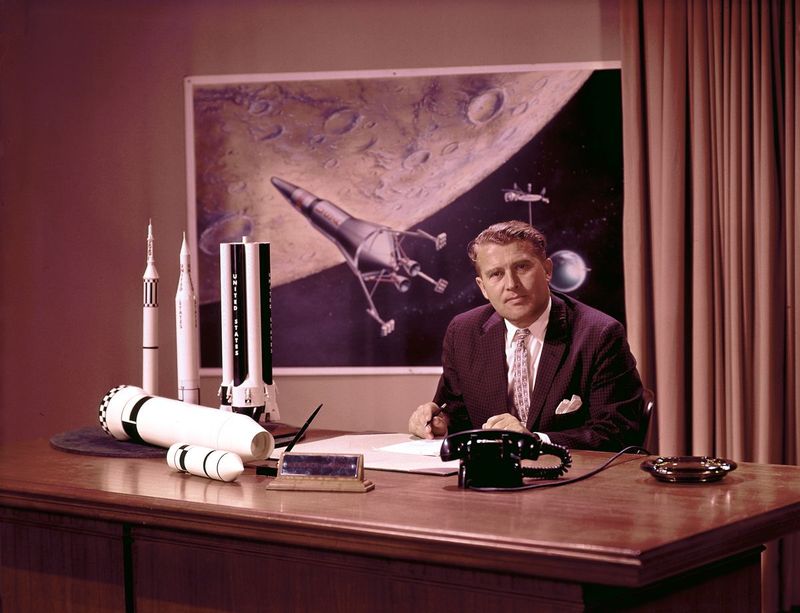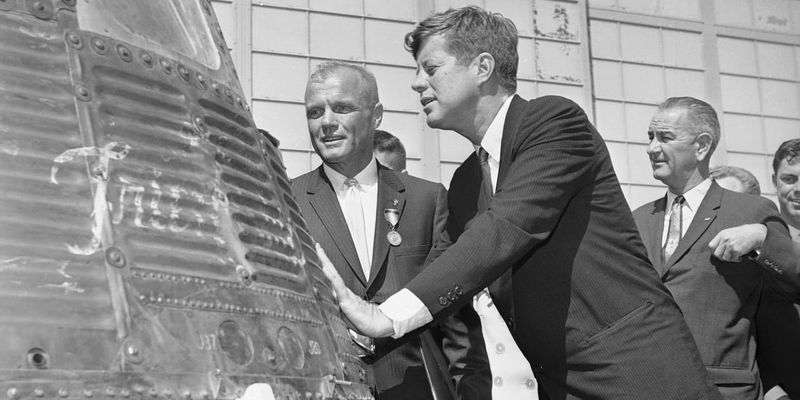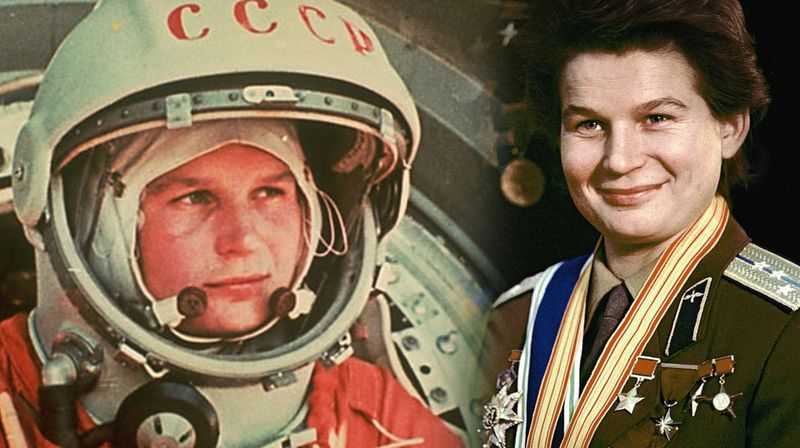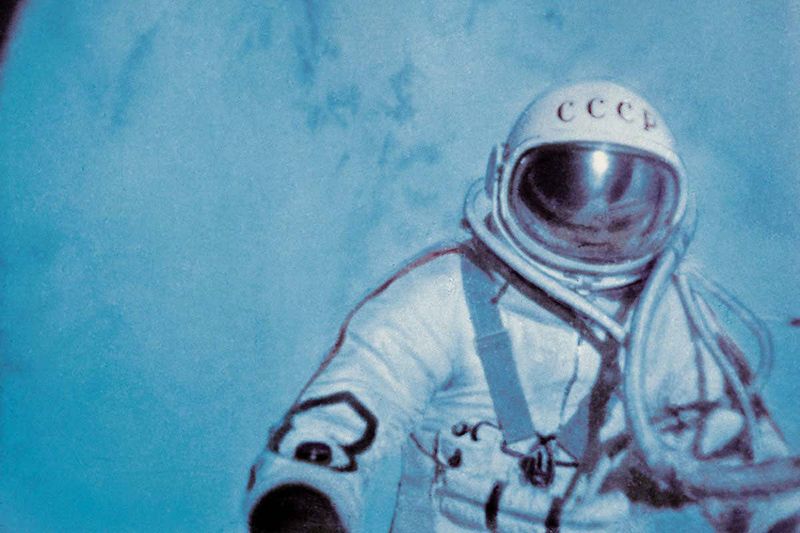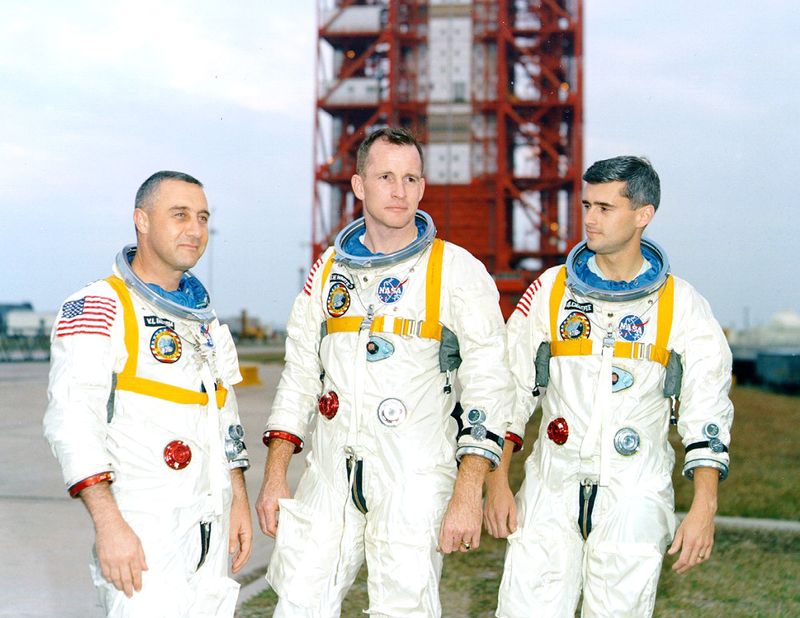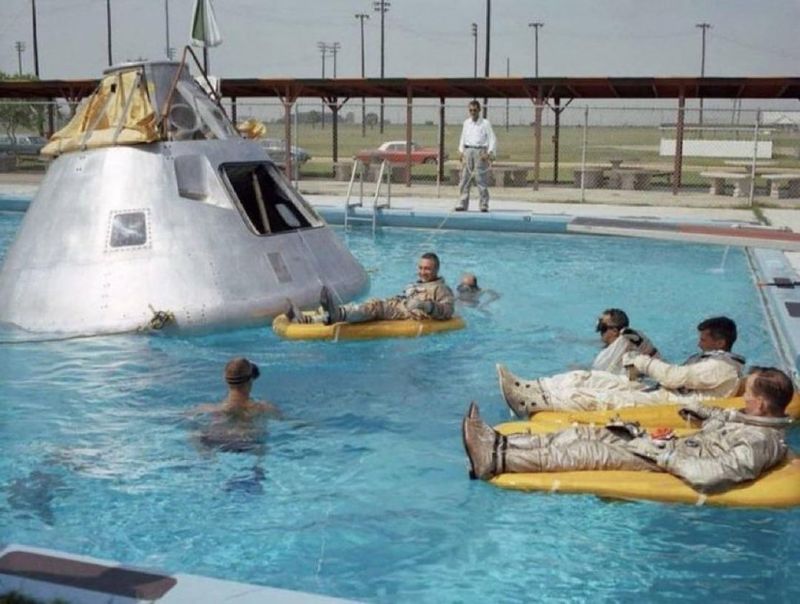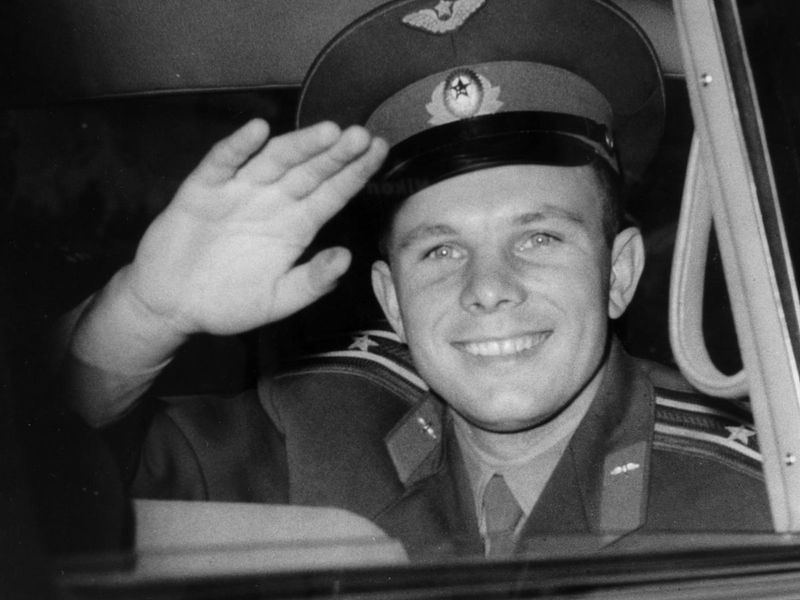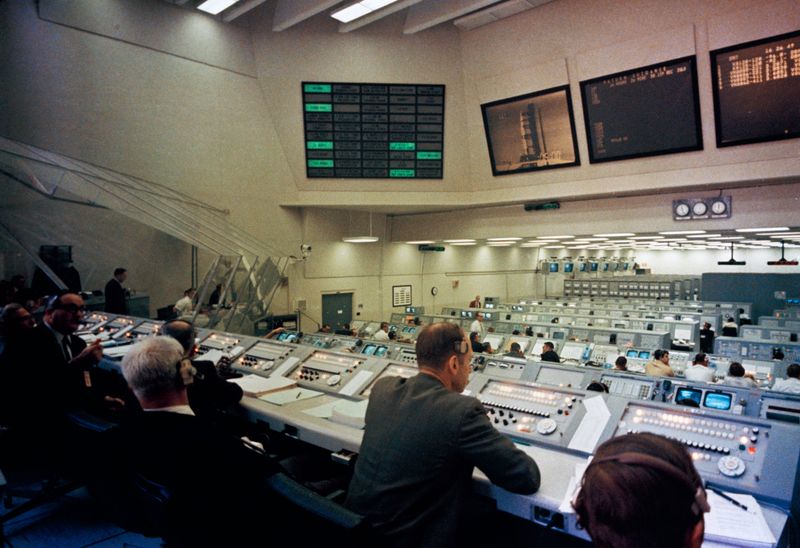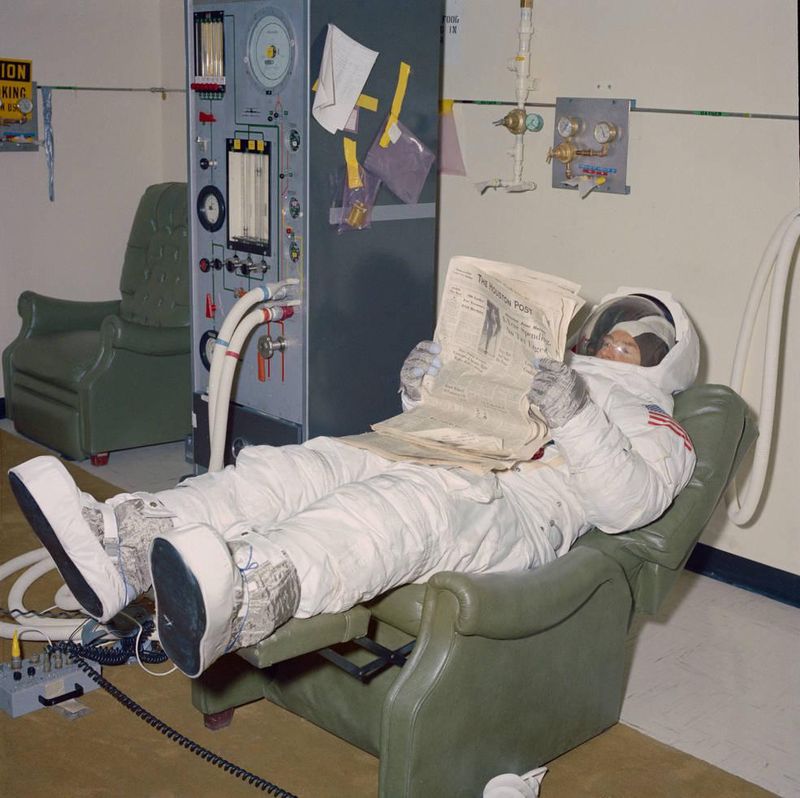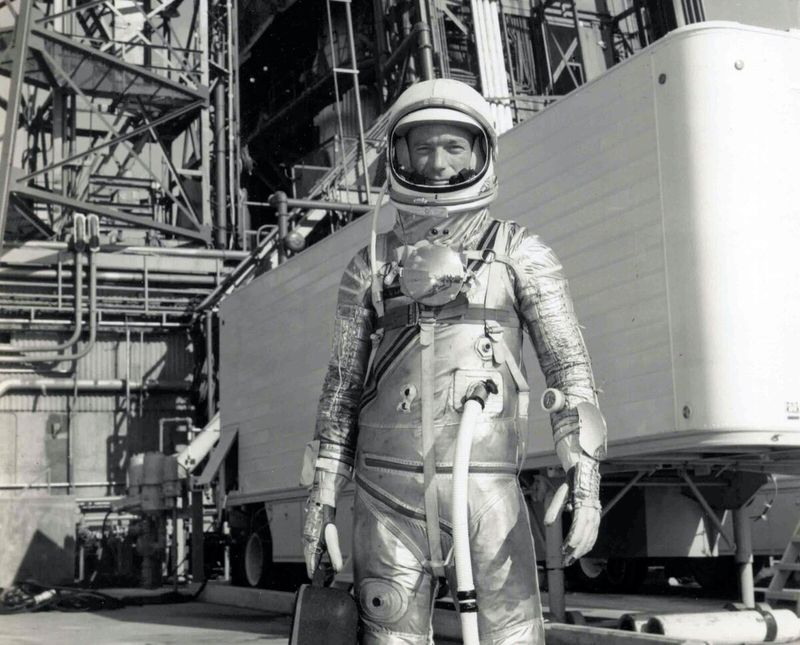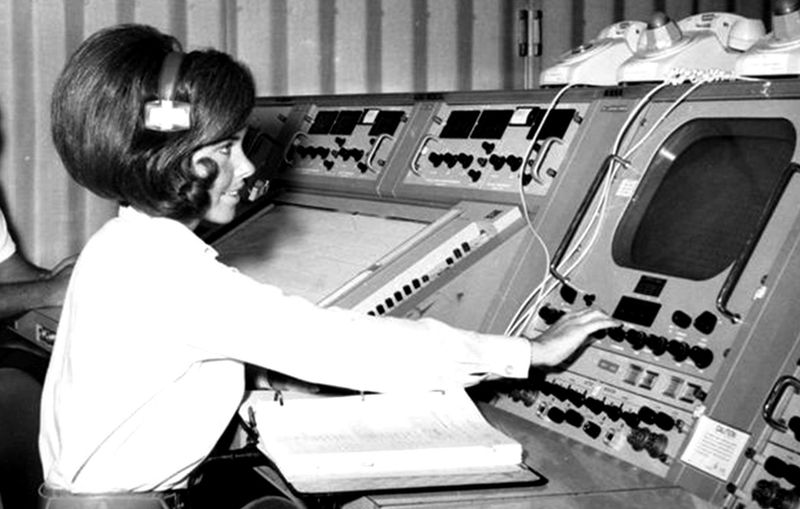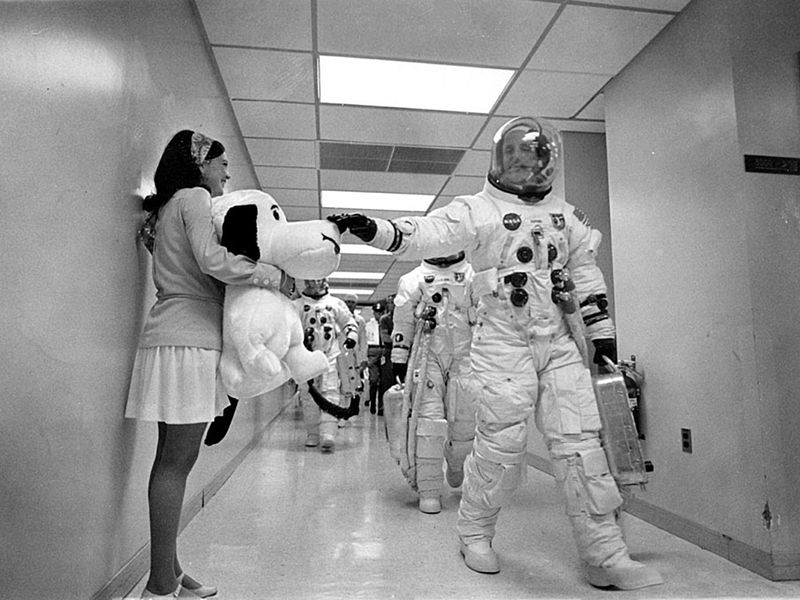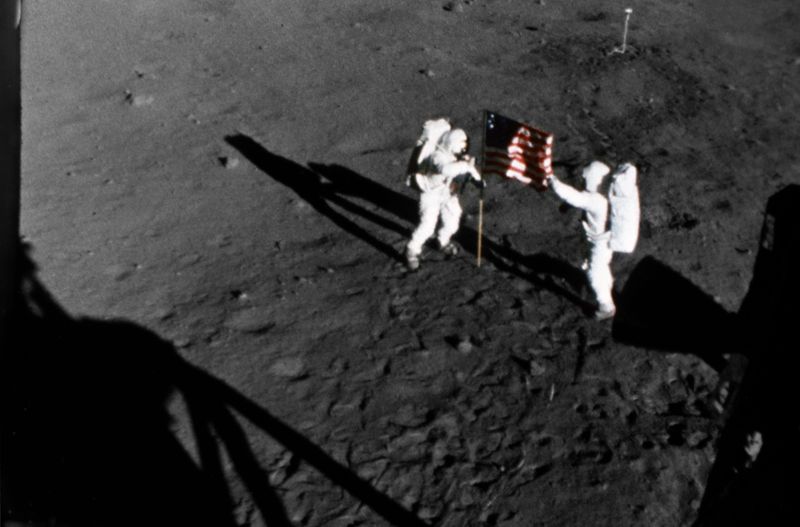20 Photos That Show How The World Looked During the ’60s Space Race
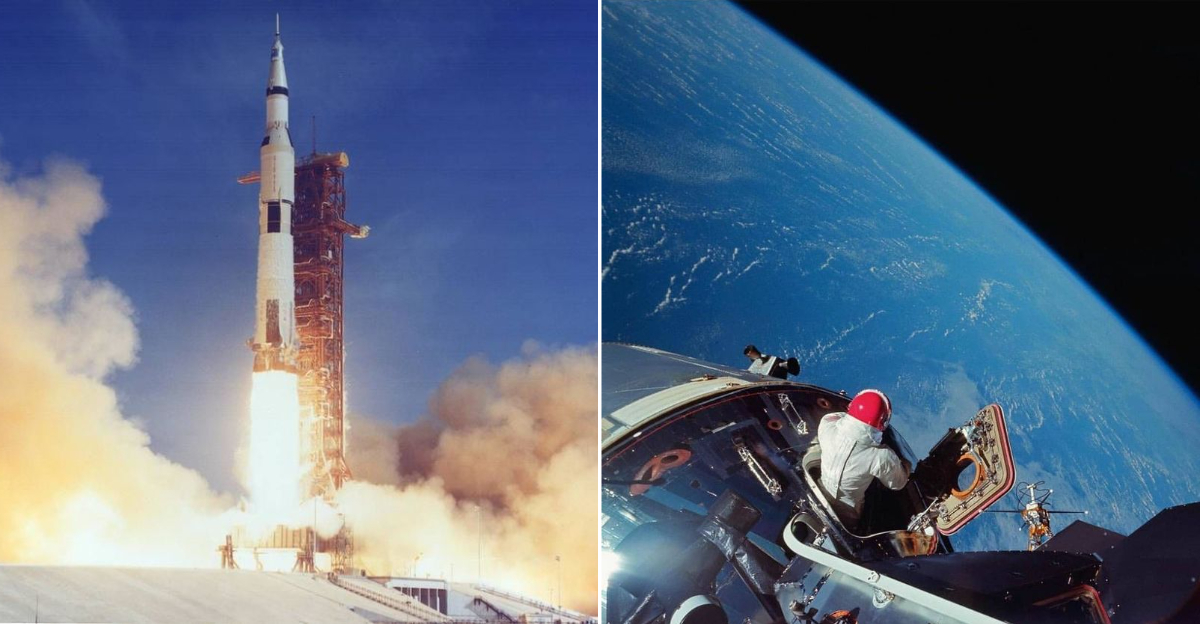
The 1960s were a time of ambition, fierce competition, and groundbreaking discoveries. As the USA and the USSR raced toward the stars, the world watched in awe.
Rockets soared, astronauts became heroes, and for the first time in history, humanity stepped beyond Earth’s boundaries. But the Space Race wasn’t just about technology—it was about people, politics, and the power of human imagination.
These 20 photos bring that era to life, capturing the triumphs, challenges, and unforgettable moments that shaped space exploration.
Buckle up—we’re taking off!
1. Von Braun with Saturn V engines, 1960s
How do you get to the Moon?
This photo captures Wernher von Braun, the mastermind behind NASA’s rocket program, standing beside the massive Saturn V engines. These engines were just big. They were the most powerful ever built, capable of launching Apollo astronauts into space.
Without these engines, the Moon landing might have remained just a dream.
Big salute to you, Mr. Von Braun.
2. JFK inspects John Glenn’s capsule, 1962
When President John F. Kennedy visited NASA in 1962, he wasn’t just there for a tour—he was there to see the future.
This photo shows him examining John Glenn’s tiny, cramped Mercury capsule—the spacecraft that made Glenn the first American to orbit Earth.
With engineers standing nearby, Kennedy’s interest wasn’t just political—it was personal. He had promised America the Moon, and eight years later, he delivered on that promise.
3. Tereshkova becomes first woman in space, 1963
Imagine being the only woman in history to leave the planet.
In 1963, Valentina Tereshkova made history as the first woman to fly to space. She was a textile worker who loved parachuting.
Her parachuting skills caught the attention of the Soviet space program, and soon she was training to fly Vostok 6.
She spent three days orbiting Earth, proving that space wasn’t just for men. Her journey opened the door for generations of female astronauts.
4. Leonov’s first spacewalk, 1965
Did you know who was the first person to step into the vacuum of space? A Soviet cosmonaut named Alexei Leonov in 1965.
It was an incredible achievement—but it almost ended in disaster.
His suit swelled up in the vacuum, making it nearly impossible for him to get back inside. Only quick thinking and an emergency air valve saved his life.
It’s a moment of courage that still inspires today.
5. Apollo 1 crew crossing access arm, 1967
Some moments in the Space Race were triumphant, while others were tragic.
This photo shows the Apollo 1 crew walking toward their spacecraft, ready for a routine ground test. Unfortunately, they would never return.
A fire inside the capsule took their lives, shocking NASA and leading to major safety changes. Their sacrifice was heartbreaking, but it made future missions safer.
Rest in peace, brave men.
6. Neil Armstrong in his spacesuit, 1966
Neil Armstrong, suited up in 1966, embodies focus and determination. Two years before he became the first man on the Moon, he was already preparing.
Even then, he knew history was waiting—and he was ready to meet it. Armstrong was a skilled pilot and engineer, having flown on Gemini 8 before his historic Apollo 11 mission.
Imagine knowing you’re about to make history—how would you prepare?
7. Apollo 1 crew’s parody photo, 196
Even astronauts need a laugh. In this 1966 photo, the Apollo 1 crew sports makeshift helmets, showing their strong bond and sense of humor.
Apollo 1, however, ended in tragedy.
Although their mission was cut short, the bravery and dedication of the Apollo 1 crew left a lasting impact on the future of space exploration.
8. Yuri Gagarin in London, 1961
The first man in space wasn’t American—it was Yuri Gagarin, a Soviet cosmonaut.
After his legendary flight in 1961, he toured the world as a hero. This photo shows him in London, waving to adoring crowds. Gagarin’s flight lasted 108 minutes, but the impact of his achievement lasted a lifetime.
Gagarin’s charm and humility made him a global icon. He is the Batman and Superman of our real world.
9. Apollo 11 flight in Kennedy Firing Room, 1969
This is it—the moment when humanity took its biggest leap.
On July 16, 1969, the Saturn V rocket ignited, carrying Neil Armstrong, Buzz Aldrin, and Michael Collins toward the Moon.
The power. The fire. The anticipation. This wasn’t just another mission—this was history being written in real-time.
After landing safely back on Earth, they were picked up by the USS Hornet, completing a journey that forever changed the world.
10. Saturn V Launch Control Center, 1967
The Saturn V Launch Control Center was a hub of innovation, where experts, surrounded by monitors and equipment, worked tirelessly to ensure success.
The pressure was immense—every decision could mean the difference between triumph and failure.
If you ever dreamed of working in this high-stakes environment, you’d need a strong foundation in fields like aerospace engineering, physics, or computer science.
Picture yourself steering a mission that changes history! You can do it!
11. Buzz Aldrin preparing for space, 1966
Buzz Aldrin, the second person to walk on the Moon, is known for his focus and dedication.
A former fighter pilot, he has always been passionate about advancing space exploration, even pushing for missions to Mars. His legacy continues to inspire many.
Have you signed up for a mission to Mars yet?
12. Dave Scott looks at Earth, 1969
In 1969, Dave Scott looked at Earth from the Apollo 9 Command Module. The view of our planet reminds us of our shared home and the need to protect it.
He was an American astronaut and the seventh person to walk on the Moon during the Apollo 15 mission.
If Instagram had existed back then, his selfie would have gone viral and gotten millions of likes.
13. Apollo 1 water landing practice, 1966
In 1966, the Apollo 1 crew practiced water landings, a crucial part of their rigorous training.
Surrounded by support teams, they prepared for every possible scenario, demonstrating the resilience and precision needed for space exploration. Every detail mattered—failure was not an option.
Their commitment was a key part of making space exploration a reality.
14. Jim Lovell reads newspaper, 1969
In 1969, Jim Lovell was photographed in a moment of quiet reflection, reading a newspaper in 1969, offers a rare glimpse into the quieter moments of an astronaut’s life.
This candid image reminds us of the human side of these pioneers, balancing personal reflection with professional commitment.
Jim Lovell, an astronaut on Apollo 8 and Apollo 13, is best known for his role in the Apollo 13 mission, a symbol of perseverance and teamwork.
Do you think he was looking for his name in the newspaper while reading?
15. NASA tests Apollo spacesuit, 1962
A NASA engineer meticulously adjusts a spacesuit in 1962. This behind-the-scenes moment highlights the precision and innovation that made space travel possible.
The suit weighed approximately 13.6 kilograms and cost around $20 million to develop.
This suit? More expensive than a Gucci one, for sure! It’s a testament to the countless hours spent perfecting every detail.
16. Judy Sullivan monitors Apollo 11 astronauts, 1969
Judy Sullivan, in charge of monitoring Apollo 11 astronauts in 1969, was key to the mission’s success.
Her role highlights the importance of diversity in achieving extraordinary achievements.
As one of the few women at NASA, she broke barriers and paved the way for future generations.
17. Apollo 11 launch, July 16, 1969
The Apollo 11 launch was a defining moment in history. The Saturn V rocket, roaring into the sky, carried humanity’s hopes and dreams.
This image captures the culmination of years of dedication—and the limitless potential of human ingenuity.
The success of Apollo 11 inspired generations to push boundaries and believe in the impossible.
18. Apollo 4 launch control, 1967
The Apollo 4 launch control room buzzed with anticipation in 1967. Engineers, diverse in age and expertise, worked in unison to ensure the mission’s success.
This was the first uncrewed test flight of the Saturn V rocket, the very rocket that would later carry astronauts to the Moon.
The launch captivated millions of viewers worldwide and provided crucial data that helped NASA prepare for the crewed Apollo missions. Do you remember watching this historic broadcast?
19. Apollo 10’s Tom Stafford with Snoopy, 1969
Tom Stafford’s playful moment with a Snoopy plush toy aboard Apollo 10 in 1969 shows that humor has its place in space.
Snoopy was used as the mascot for NASA’s safety program, symbolizing the need for care and caution during missions.
The lighthearted moment reminded astronauts and the public alike that even in the serious world of space exploration, there’s always room for a little fun.
20. Armstrong and Aldrin walk on the moon, 1969
A single photo. A moment that changed everything.
Here they are—the first humans to set foot on another world. Their suits shine under the harsh Moonlight, their footprints marking the first steps of an interstellar future.
Armstrong’s words: “That’s one small step for man, one giant leap for mankind”—still echo through time.

